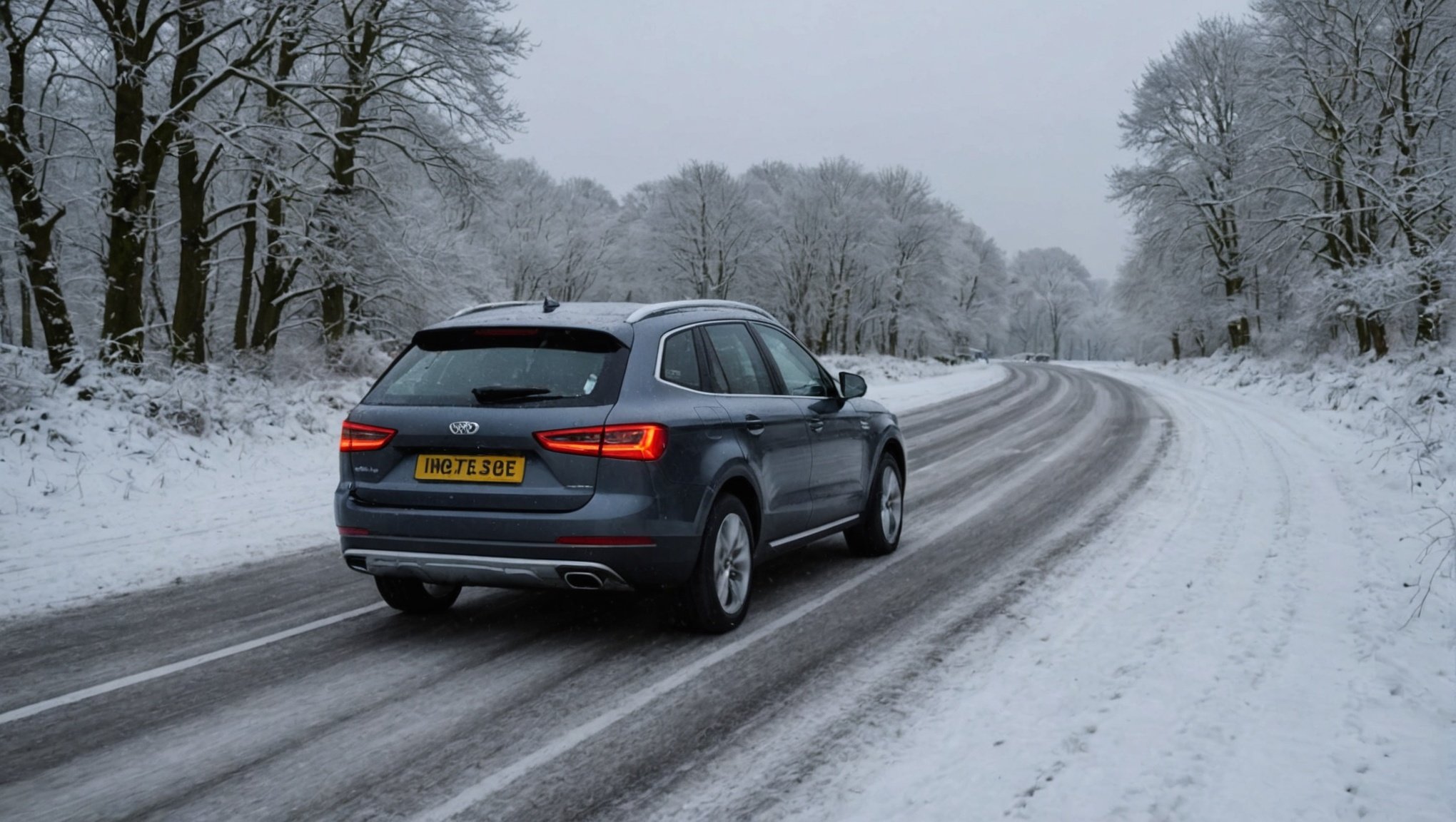In the midst of winter, the roads can turn into a blanket of ice and snow. The slippery conditions, decreased visibility, and increased stopping distance have always been nerve-racking for drivers. The key to safe winter driving lies in understanding your vehicle’s capabilities and limitations, especially when it comes to its traction control system. In this article, we will guide you on how to properly configure your car’s traction control system for cruising on icy UK roads.
Understanding Traction Control
Before diving into the details of setting up your traction control system, you should first grasp what it is and how it works. Traction control is a safety feature installed in cars to prevent wheels from spinning on wet, icy or snow-covered roads. It ensures that there’s enough ‘grip’ between your tyres and the road surface.
Topic to read : How can you optimize the settings of your vehicle’s automatic emergency braking system?
Traction control works by automatically applying brake force to individual wheels or reducing engine power to restore traction and prevent skidding. This means, when you’re driving on icy or snow-covered roads, the system ensures that you don’t lose control of the car due to wheel spin.
Configuring Traction Control Effectively
Now that you have a basic understanding of what traction control is and its importance in winter driving, let’s move on to how you should configure it for icy UK roads. Remember, the goal here is to achieve optimal traction under these challenging conditions.
This might interest you : What are the safety implications of using non-OEM parts in vehicle repairs?
Firstly, always ensure that your traction control system is turned on whenever you drive on icy roads. This might seem obvious, but some drivers intentionally turn it off, mistakenly believing they can handle the car better without it. This is a risky mindset that can lead to accidents.
Secondly, if your car has a ‘winter’ or ‘snow’ mode, make sure to activate it. This mode adjusts the vehicle’s performance for better control and stability on slick surfaces. It allows for smoother starts and better vehicle control at lower speeds by reducing throttle response and making the traction control system more sensitive.
Importance of Tyres in Winter Driving
It’s crucial to understand that no matter how well you’ve configured your traction control system, it won’t help much if your tyres are not up to the mark. Tyres are the only point of contact between your car and the icy road. Therefore, having the right tyres is imperative for safe winter driving.
When driving on icy UK roads, you should ideally use winter tyres. These tyres are specifically designed to perform well under winter conditions as they offer better grip on snow and ice. They have a special type of rubber that stays flexible at low temperatures, contributing to better road grip.
Additionally, regularly check the tyre pressure. Tyres tend to lose pressure when the temperature drops. Driving with under-inflated tyres can affect your car’s handling and the effectiveness of the traction control system.
Safe Driving Practices on Icy Roads
Configuring your traction control system correctly and having winter-appropriate tyres are crucial steps towards safe driving on icy roads. However, these steps alone will not guarantee safety. You must also follow safe driving practices.
Always drive slower than you normally would, giving yourself plenty of time to react to the icy conditions. Keep a safe distance from other vehicles to give yourself enough space to stop without sliding.
Avoid sudden braking and sharp turns, as these can lead to skidding. Instead, apply brakes gently and steer smoothly.
Lastly, no matter how confident you feel, never underestimate the unpredictable nature of winter roads. Always stay alert and be prepared for sudden changes in road conditions.
Regular Vehicle Maintenance
Regular maintenance of your vehicle is another factor that can contribute to safer winter driving. Keep your car in the best possible shape to tackle the harsh winter conditions.
Ensure that your battery is in good condition, as cold weather can affect its performance. Check the brakes regularly, as their effectiveness is crucial for safe driving on icy roads. Make sure the windshield wipers are functioning properly and the defrosting system is efficient.
In the end, remember that while technology like traction control is a valuable tool for winter driving, it does not replace the need for careful and attentive driving. Configure your traction control system properly, keep your car well-maintained, and most importantly, drive responsibly.
The Importance of Breakdown Cover and Traffic News
When embarking on a journey during winter, it is crucial to be prepared for all possibilities, including a potential breakdown. Accidents and car troubles are more common during winter, mainly due to the slippery roads and harsh weather conditions. Breakdown cover is an essential service that provides assistance when your car breaks down while you’re on the road.
A good breakdown cover can provide invaluable help in such situations, including towing your car to the nearest garage, or even to your home if necessary. Some breakdown services also offer onsite repair, which can be particularly helpful in freezing conditions. Plus, it can provide you with a replacement car if your vehicle needs extensive repairs.
Moreover, staying updated with traffic news can also help you avoid certain routes that are heavily affected by the icy conditions. Various apps and websites provide real-time traffic information, highlighting any accidents, road closures or heavy traffic due to the weather conditions.
Equally crucial is the knowledge on how to use equipment like snow chains. These devices, when fitted to the tyres, provide extra grip on slippery roads. However, they should only be used where heavy snow or ice makes it impossible to drive without them, and should be removed when you reach a cleared road to prevent damage to your car and the road surface.
The Role of Electric Cars and Four-Wheel Drive
The rise of electric cars has introduced a new dynamic to winter driving. Electric cars are generally heavier than their petrol or diesel counterparts due to their batteries. This weight can be beneficial in winter driving as it can help the car stay stable on icy roads.
Moreover, electric cars often come with sophisticated traction control systems, making them well-suited for snowy and icy conditions. However, it’s important to keep in mind that cold weather can reduce the range of electric cars. Therefore, always ensure your vehicle is charged and consider carrying a charging cable for emergencies.
On the other hand, cars equipped with four-wheel drive (4WD) can offer better control on icy roads. A 4WD system delivers power to all four wheels of the car simultaneously, providing better traction. However, while 4WD can help you get moving or stay stable on slippery roads, it does not help you stop any quicker on ice or snow. Therefore, do not become overconfident and drive with the same caution as any other vehicle.
Driving on icy UK roads can indeed be challenging, but with the right knowledge and preparation, you can ensure a safe journey. Understanding and effectively configuring your car’s traction control system will significantly improve its performance under such conditions.
Remember, winter tyres are a must for better grip on icy roads, and regular vehicle maintenance should not be overlooked. Stay updated with the latest traffic news and ensure you have breakdown cover for any unforeseen situations.
Consider the benefits of electric cars and four-wheel drive vehicles in winter driving, but do not let these features make you complacent. Lastly, always follow safe driving practices regardless of how well-equipped your vehicle may be. Remember, your safety and that of others on the road is paramount. Drive responsibly, and stay safe this winter.











